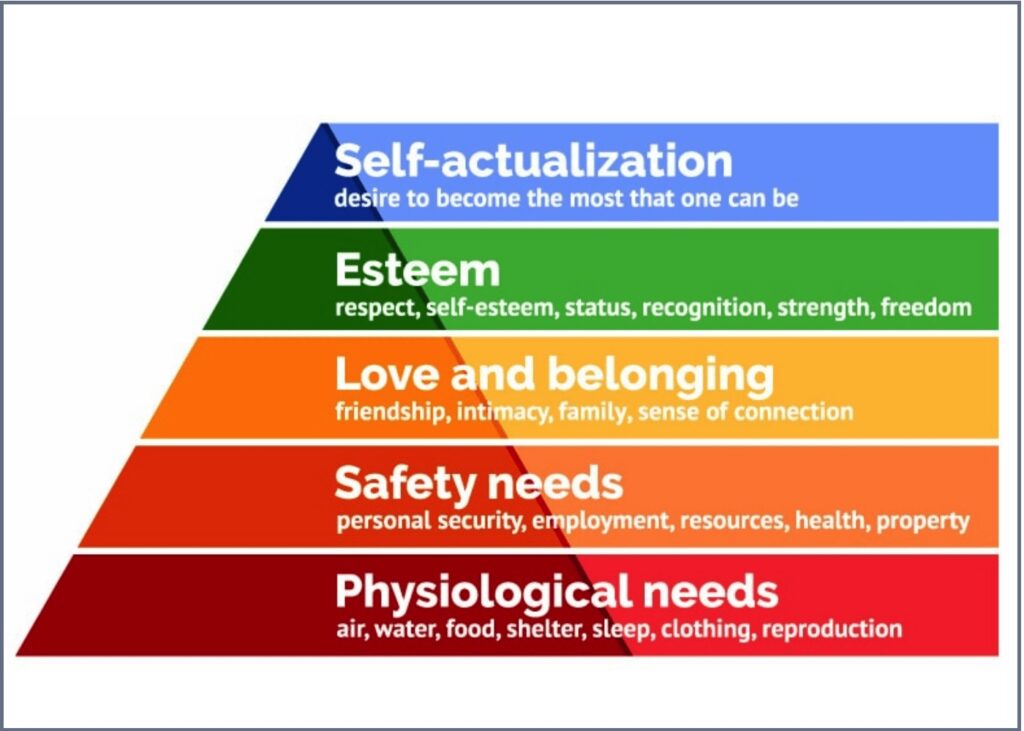The data is clear, engaged employees are absent less, have fewer injuries, and are significantly more productive with higher quality levels than an under-engaged or actively disengaged employee. Yet despite the increasing billions being spent year after year on employee engagement programs in the U.S., the average number of engaged employees has hardly moved from around 30% in more than two decades. Take a look at the top-100 best places to work in the country, top-50 in your state, maybe the top-25 in your nearest large metropolis and you will find no apparent solution for employee engagement.
Not all the best places to work have great medical benefits, or profit sharing, a cafeteria or a gym, unlimited paid time off, or any other appealing perk. On the surface it is very difficult to discern what exactly is the correct formula for employee engagement that these best places to work have discovered. But if you dig deeper, you will find that the most common feature at these companies, is how they treat their people. Whether by design or happenstance they seem to mimic a process that helps team members move up the hierarchy of needs developed by famed psychologist Abraham Maslow.

Needs
Maslow developed a model that suggested there were 5 levels of needs that each person strives to satisfy: survival, safety, belonging, esteem, and actualization. Most often diagramed as a pyramid depicting the more primary need of survival as the foundation and moving upward to the more aspirational need of self-actualization. The basic premise is that a person would aspire to exist at a higher level on the pyramid by mastering each lower level in turn. If stuck in a lower need they could not sustainably experience or thrive in any of the higher needs. There is even an ebb and flow to these needs so an individual may hover, rising and falling between multiple levels over time as life transitions occur. Quite a few books and methods have been developed to apply this hierarchical thinking to business and some specifically to employee engagement.
Therefore, when it comes to employee engagement there is a micro and macro level to these needs. The company’s perceived state of need can influence the employee more dramatically than even their own need status, depending on the relative criticality. Imagine an employee well into self-actualization learning that the company was about to file bankruptcy, falling to survival mode. What impact might this have on their personal wellbeing? At the micro levels the needs reflect the individual’s thoughts and feelings about their place in the organization and their own circumstances. At the macro level, the needs reflect the employee’s concerns about the company’s current state.
Survival (Solvency)
At the micro level, the person is concerned that they are going to be able to provide for themselves and their loved ones with basic needs like food, clothing, and proper shelter. Are they living paycheck to paycheck or mired in debt? This could also reflect a personal or family member health issue that creates a high level of anxiety. At this level they are going to be so mentally distracted and stressed it will be difficult for them to really enjoy and engage with their work fully.
Similarly, at the macro level, if they are concerned that the company is in dire straits and at risk going out of business, the same engagement challenge ensues regardless of how well the person is currently doing on basic needs. Here the important thing is for the company to be operating in a way that is sustainable (not necessarily having to do with the environment, more so referring to financial stability, solvency, and marketplace viability) in the long term. If the company is going through some struggle, it is best to be transparent and yet confident in your leadership to move the company forward. Once an employee feels comfortable that they and the company have satisfied the Survival needs level then they can move up to the Safety level.
Safety (Management)
Here at the micro level, the employee is focused on needs related to personal safety and security. This includes physical and employment security. If they have a poor relationship with their manager or feel threatened by other employees, then it will be hard for them to engage with the workplace and move beyond this level. Most people quit their supervisor not their company. This can easily turn into the commonly seen CYA mentality where manipulation and active disengagement becomes commonplace.
Additionally at the macro level, if the employees are concerned that the company is on shaky ground then that can pull them back to this level of need even if they have reached a higher stage in their personal life. How confident are the employees in the decision making of the management? How confident are they in the company strategy? Good executive leadership and strong middle managers can make all the difference. Communicating the state of the company with clarity and confidence can assuage the concerns of most employees.
Belonging (Culture/Values)
In some ways this is the beginning of true employee engagement. People have overcome their concern of merely surviving and being safe. At the micro level, they now think of themselves as being a part of the company culture and member of the workplace community. Maybe they have a best friend at work (highly correlated with retention and engagement at work) or strong relationships with coworkers, which are big factors in employee retention and happiness. Do they feel valued by management and coworkers? If someone is struggling with the company culture, fellow coworkers, and/or their supervisor it is highly unlikely they will reach an engaged level of performance.
At the macro level, this is where company culture and values play a key part. Executives and managers must exhibit the values and mission of the company. If the company does not live a set of key principles or has different rules for different departments, this can construct barriers to the feeling of belonging and divide employees and team collaborations. You will often see this as a division between front office communications and frontline behaviors. This division can threaten the stability of this level of need and keep engagement from stabilizing or advancing to Esteem. Make sure all levels of leadership and messaging are consistent and aligned.
Self-Esteem (Brand)
Once employees feel they belong to the company community, they can begin to focus on their contribution to the collective and personal happiness. If they are good at what they do it brings a high degree of self-esteem. If they are working in an area of their strengths, this also seems to help them easily master this level of the need hierarchy. When people work in an area of their personal strengths, they tend to enjoy the work more, perform better, and deliver value that reinforces their self-esteem, all of which significantly increases engagement. Do they feel that the contribution they make to the company is meaningful and demonstrably appreciated? Are they rewarded for the work that they do in a way that shows consistency and fairness? At the macro level, this translates more into the company brand. Can they be proud of the company they work for?
Company brand is important not only as a marketplace advantage but also to a human advantage in the form of employee engagement. Does the company mission and brand send the right message to customers? Is the company providing a product or service that really makes a difference in a way that the company and those people affiliated with it can feel proud? It is important to walk the talk. This doesn’t mean take a stand for something outside of your product strategy or brand promises. This is more about building a reputation of customer value with your product or service and staying focused.
If the company does not consistently delivery on its brand promises or strays too far from its core purpose, this can cause companies to lose their footing with customers and employees. This also applies to companies that have a public failure, lapse in ethics, or poor social media image. Staying in your lane and delivering on your company promises to the customer is most important for your image, status, and employee engagement success in order to move onto Actualization, the top of the needs pyramid.
Actualization (Purpose)
At the macro level this need is concerned with the employee feeling that they are growing as an individual both personally and professionally toward fulfilling some larger purpose. Obviously, some products and services (i.e. medical, humanitarian, environmental) lend themselves more readily to this type of purposeful feeling. However, even at the individual level a person in your organization can be growing through personal development and personal goals outside of work. Maybe they are going to school to better themselves or doing charitable work. Being aware of their personal aspirations and helping support those goals can go a long way toward enhancing their commitment to your company. Do they see a growth path professionally within the company and personally as a human being? Here is where professional development, mentoring, training, and succession planning have a strong impact on employee engagement.
At the macro level, this refers to the transformative purpose, overriding vision, or audacious goal set for the organization. This is often the inspiring vision that attracted people to the organization in the first place and keeps them aligned to a singular purpose. Do they resonate with the company purpose, do they feel inspired by the vision of the organization, like they are a part of something impactful for the world? The more altruistic, impossible, or aspirational the company’s transformative purpose is, the more it seems to bond team members together. At this level of employee engagement, individuals and companies thrive exponentially together.
Transcendence
Maslow’s later work focused on the idea of transcendence. This was an even higher level of the pyramid hierarchy than actualization. His work revolved around the idea of mastering the ability to ascend the pyramid through self-actualization, setting an example for others, and even teaching others to master the hierarchy of needs. In a sense this would be the ultimate goal for a company’s executive team and other leadership to aspire toward. Moving your team members up the needs hierarchy gets more people aligned, engaged with their work, and striving for the vision of the organization. Mastering the business practices that move the organization up the pyramid, equally ensures success of the company in the marketplace especially if you make name for yourself by helping other companies succeed at employee engagement.
The first place to start is to really evaluate your team and organization to determine just where you are hovering on the needs pyramid, what is your ebb and flow. Then figure out where you need the most attention and focus to gain momentum for your team and organization. Share this article with your team members so that the principles are widely spread and understood throughout your leadership and beyond. Then together frontline and front office can plot a path upward for employee engagement and company success.
Interested in stepping up your employee engagement strategy? We can help! A Certified Scaling Up Coach can guide you and your leadership team through the process and offer actionable steps. Please contact our team at align5 by clicking here.
Interested in scaling your business and crushing your biggest goals? Please take our Free Growth Assessment, which will evaluate the strength of your company based on four core business disciplines that must be in place before scaling successfully – People, Strategy, Execution and Cash.
Find us on Linkedin & Facebook with on-going content and resources to help you throughout your entrepreneurial journey.






